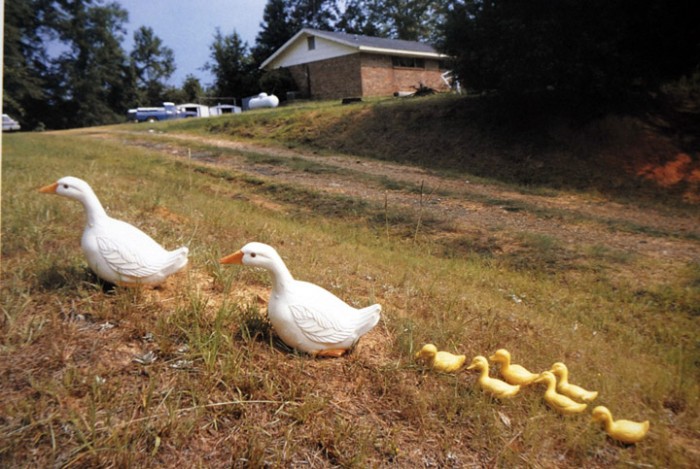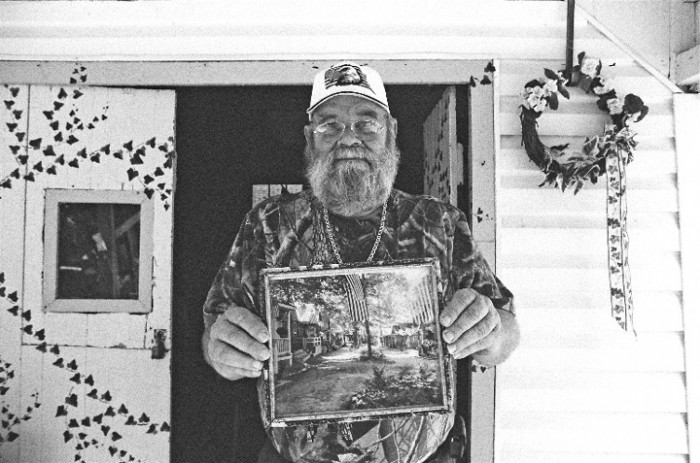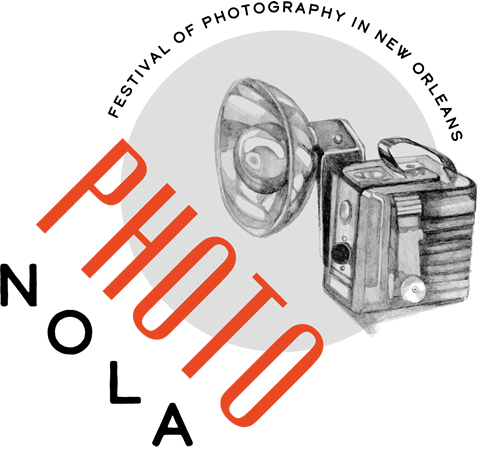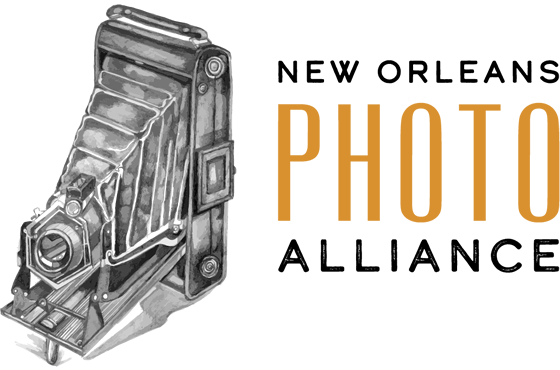
Currents 2009: New Orleans Photo Alliance Members Showcase
Location:
Crescent City Brewhouse
527 Decatur Street
New Orleans, LA 70130
Mon-Fri 12-10, Sat+Sun 11:30-10
504-522-0571
Exhibition Dates:
Dec 1, 2009 – Jan 3, 2010
Opening:
Wednesday, Dec 2, 5-7pm
The New Orleans Photo Alliance (NOPA) in conjunction with the Crescent City Brewhouse is pleased to present CURRENTS 2009: New Orleans Photo Alliance Members Showcase. This portfolio-based exhibition, curated by Edward Hébert, will feature works by eight NOPA members: Renee Allie, Michelle Icahn, David Rae Morris, Owen Murphy, Jennifer Shaw, Jenn Ocken, Antonio Henriquez and Jennifer Zdon.
CURRENTS 2009 will be on exhibit from Dec 1, 2009 through Jan 3, 2010, during the fourth annual PhotoNOLA festival. The opening reception takes place on Wednesday, December 2, 2009, from 5-7pm with complimentary draft beer and hors d’oeuvres. The Crescent City Brewhouse is located at 527 Decatur Street in New Orleans’ French Quarter.
“In curating this exhibition I chose artists based on the strength of their portfolios, looking for compelling bodies of work that would stand on their own and also hang well together within the context of a French Quarter restaurant,” said curator Edward Hébert, Director of A Gallery for Fine Photography. “This group exemplifies different approaches to photography. The photographs range from a documentary perspective to work that is more aesthetic in nature.”
Visitors to the Crescent City Brewhouse will be treated to inside views of New Orleans and the South, including images from David Rae Morris’s book “My Mississippi,” intimate portraits of blues musicians by Jenn Ocken, colorful second line photographs by Michelle Ichan, and French Quarter street scenes by Antonio Henriquez. Jennifer Zdon’s black and white documentary images cover rituals within our community and Jennifer Shaw will exhibit new images focused on childhood. Owen Murphy offers richly saturated scenes depicting the architecture and people from two towns in Mexico, and Renee Allie will exhibit a series documenting Methodist campgrounds.
Photographers Statements & Bios:

Renee Allie: “Greetings from Camp Meeting”
In the late 1700’s through the early 1900’s there was an intense religious fervor that swept the United States known as the “Great Revival” period. Out of this time there emerged many new religious leaders, new traditions and even, entire new religions. The Camp Meeting Movement was born of this time. Camp Meetings are revival meetings in which families camp together for a week or more, traditionally, after the crops are planted. In the early days, families traveled long distances to reach the meetings, making the camping aspect an important, if not necessary component of these meetings.
Over time the campsites became more modernized; structures were erected to replace tents—many of them early pre-fab houses ordered from catalogs, and many hand-built to a criteria specific to that particular camp. But the families, through as many as six or seven generations, continue to travel once a year to these camp sites for the gathering known as “campmeeting”. At the turn of the century there were no less than 2000 of these camps, today there are an estimated 1000. Of the older camps there are 80 that are from 1850 or before.
During the 1990’s my brother bought a cottage in one of the oldest surviving camps in Connecticut; coincidentally I learned that a friend of mine in New Orleans owned a cabin at a camp in Mississippi that pre-dated 1850. Over the years I have spent time at these two camps photographing the architecture, people and activities of the camps.
This past summer I set out on a road trip to discover and document a number of the other surviving older camps. I drove 4400 miles and visited 21 camps, staying for a period of hours or days as the spirit moved me. I am still working on this series and plan to revisit some of the camps this summer to further photograph and refine my vision after which I will be putting together a book.

Antonio Henriquez
Antonio Henriquez is an amateur photographer and long-time New Orleans resident whose favorite subject is the city of New Orleans itself, including the architecture and the people in the French Quarter. Antonio has been photographing for the last ten years with an emphasis on digital photography. His pictures have won several awards and have been chosen for exhibitions in NOPA Currents 2009 and Cemeteryscape. Some of his work can be seen at www.nolagallery.com

Michelle Icahn
Michelle Icahn was born and raised in Bedford, New York. She came to New Orleans for the first time while in high school and knew this incredible city would one day be her home. After graduating in from Tulane in 2004, having minored in photography, she moved to Colorado and began a five year ‘career’ of traveling and working various jobs in retail, film, the service industry, and journalism – all the while documenting it with her camera. It was during her stay for this year’s Jazz Festival that she decided to move back.
She now lives in the Treme with her newly rescued, incredibly sweet Pit Bull, Mae, and has taken a much more focused approach to photographing the magic this city generates. Always having her camera with her, she tries to capture anything she connects with, and endlessly appreciates all that the city and its amazing residents offer: their energy, resilience, pride, humor, and emotion. Michelle also volunteers as a photographer for various organizations throughout the city including a rescue operation called Dogs of the 9th Ward and Silence is Violence, and is going for her teaching certification in elementary education.
Michelle’s images in this show cover the Black Men of Labor Second Line Parade (which kicked off the 2009 season), The Storyville Stompers performing on Frenchman Street during the first night of Satchmo Summerfest, and musicians playing on the steps of the Backstreet Cultural Museum on White Buffalo day. In her own words:
“New Orleans is famous for its unique history and captivating culture. It oozes through the ancient architecture and narrow streets of the French Quarter that still fill with echoes of decadent laughter. Visitors can taste the city’s diverse heritage with a hearty helping of gumbo or oyster po-boy. Locals feel the friendly sense of community when a neighbor waves hello from their front porch across the way. No one can argue though that music plays one of the most instrumental roles in keeping the mesmerizing energy of the city radiating, the traditions alive, and the residents marching with heads held high.”

David Rae Morris
These photographs are from a series I did on the state of Mississippi in the 1990s. Setting out to photograph the people and places of Mississippi was like no other experience I had ever had. How does one “document” an entire state? The intensity of the creative process and the confusion and frustration of trying to force something that would not always work made for many sleepless nights. In describing the situation to friends, I said that I was like a V-8 engine running on three cylinders, unable to get the proper fuel to air mixture required for a fine tuned engine. At the same time, I wondered how I would confront the state’s violent and racist past and remain hopeful for the future. To resolve these issues, I sought out the advice of friends and other artists from a host of different disciplines. How did they create? How did they cope with the inevitable stresses and dangers of the creative process? How did they make things work and when did they know they were on the right track? I came to understand that the creative space I was seeking was what the musician Jerry Garcia called the “form that follows chaos.” When you throw out all the rules, he said, let go of your own pre-conceptions, and stop trying to make anything happen on any level, other “stuff” starts to happen. In other words, I had to stop forcing ideas and situations and let the images come to me. With that in mind, the images began to flow freely, and I was able to portray the people and places of Mississippi as they have been shaped by history. I have tried not to present a series of pretty pictures, but one that is both inviting and challenging, that threads a visual narrative that reflects historical consciousness but does so in a respectful manner. The University Press of Mississippi published the resulting book “My Mississippi,” in 2000 with the text by my late father, Willie Morris.

Owen Murphy
Every year or two, I make a trip to a different part of Mexico. This has been happening for almost 30 years. I am always amazed at the use of color, the taste of the food, and the smells that greet me on my returns.
In 2007, I went to the state of Veracruz and visited the capital, Xalapa, as well as the small town of Xico. This is a region on the eastern side of the country where Cortez landed when he subjugated Mexico for the Spanish. By and large, the Mexicans are friendly, honest and hard working industrious people. Their hospitality is something that as a New Orleanian I can truly appreciate. These images are part of the continuous explorations of a vibrant country and my hope is that these photos are are more than merely touristic.

Jenn Ocken
My “Documenting Blues” Exhibit is a collection of emotion rich stories expressed in a series of unique photographs taken of musicians, their instruments and the surrounding environments where the blues exist. I am dedicated to recording, preserving and sharing the culture and heritage of the blues in hopes to share with others the stories and the music that nurtures this wonderful art form.
It is an awesome experience to watch a musician perform with his or hers entire soul exposed to the fans. I have been documenting the blues scene since 2002 traveling all along the Mississippi following the blues of artist today. I am blessed to have learned to anticipate the reactions to the emotions felt by the artist performing. Taking these feelings with me to the next step in processing my images, as I tone and enhance of each image to develop my stories with a deeper intense representation of those emotions I relate to while capturing the images. It is powerful to think that as a musician they truly give their life to the fans. I am thankful to be one of those fans that understand the beauty of their art. And I hope my avenue of preservation speaks to many about just how influential the blues has been and continues to be through out the world.

Jennifer Shaw
Jennifer Shaw grew up in Milwaukee, studied photography at RISD, and then moved to New Orleans in pursuit of the artist’s life. She teaches the disappearing art of darkroom photography at the Louise S. McGehee School and works as a freelance photographer, with a concentration on her personal work and custom portraiture. She is a founding board member of the New Orleans Photo Alliance, and chairs their annual PhotoNOLA festival, in addition to chasing after two young sons.
Jennifer’s photographs have been featured in B&W Magazine, Shots, Light Leaks Magazine, The Oxford American and The Sun. Her work has been exhibited internationally, and is held in both private and public collections, including the Huntsville Museum of Art, the New Orleans Museum of Art and the Ogden Museum of Southern Art.
Jennifer will be exhibiting a new series of images focusing on childhood. These pictures of her children and others are rendered in b&w and capture moments of play with an emotional undercurrent, looking beyond the myth of innocence.

Jennifer Zdon
Jennifer Zdon is a documentary and editorial photographer whose passion is to portray moments that often go unnoticed, giving readers a peek behind closed doors, with a warm and compassionate touch. She is drawn to show the quirky and whimsical sides of a community, using photography to highlight the trials and joys of life. She has covered stories in South America, Europe and across the American South and contributed to the photo books “America 24/7,” “Louisiana 24/7” and “America at Home.” She is also a member of the staff at The Times-Picayune that won the 2006 Pulitzer Prize for Public Service for Hurricane Katrina coverage. Zdon has been a photographer for the newspaper since 1995.
About the Curator:
Edward Hébert serves as Director of A Gallery for Fine Photography (A Gallery), a world-renowned gallery located in New Orleans’ French Quarter. A native of New Orleans, Louisiana, Hébert’s formal arts education began at the New Orleans Center for Creative Arts (NOCCA). He earned a Bachelor of Arts degree at the University of New Orleans in 1986 after which he relocated to Boston, Massachusetts, to pursue painting, drawing and developing color photography (1987-1991). His works have been exhibited in numerous venues in New Orleans for the past eighteen years.
Hébert joined A Gallery in 1993. In his sixteen years there he has imparted his knowledge of art history and the history of photography to gallery patrons, helping to build an extensive client base. Hébert has traveled to represent the gallery at international photography and art fairs such as AIPAD in New York City, Paris Photo and Art Basel in Switzerland. He maintains a constant and current working knowledge of all aspects of the photographic art world. Please visit www.agallery.com for more information about A Gallery, currently in its thirty-sixth year of operation.
++++++++++++++++++++++++++++++++++++++++++++++++++++++++++++
About NOPA
The New Orleans Photo Alliance (www.neworleansphotoalliance.org) is a volunteer run 501(c)(3) nonprofit arts organization. NOPA was formed by a diverse group of photographers in 2006 to foster community and professional opportunities for photographers in the Gulf South and currently includes more than 350 members from across Louisiana and throughout the United States. Since its inception the New Orleans Photo Alliance has sponsored numerous photographic exhibitions, workshops, and educational programs, including PhotoNOLA, the annual photography festival in New Orleans, and has instituted the Michael P. Smith Fund for Documentary Photography, a $5000 annual grant.

